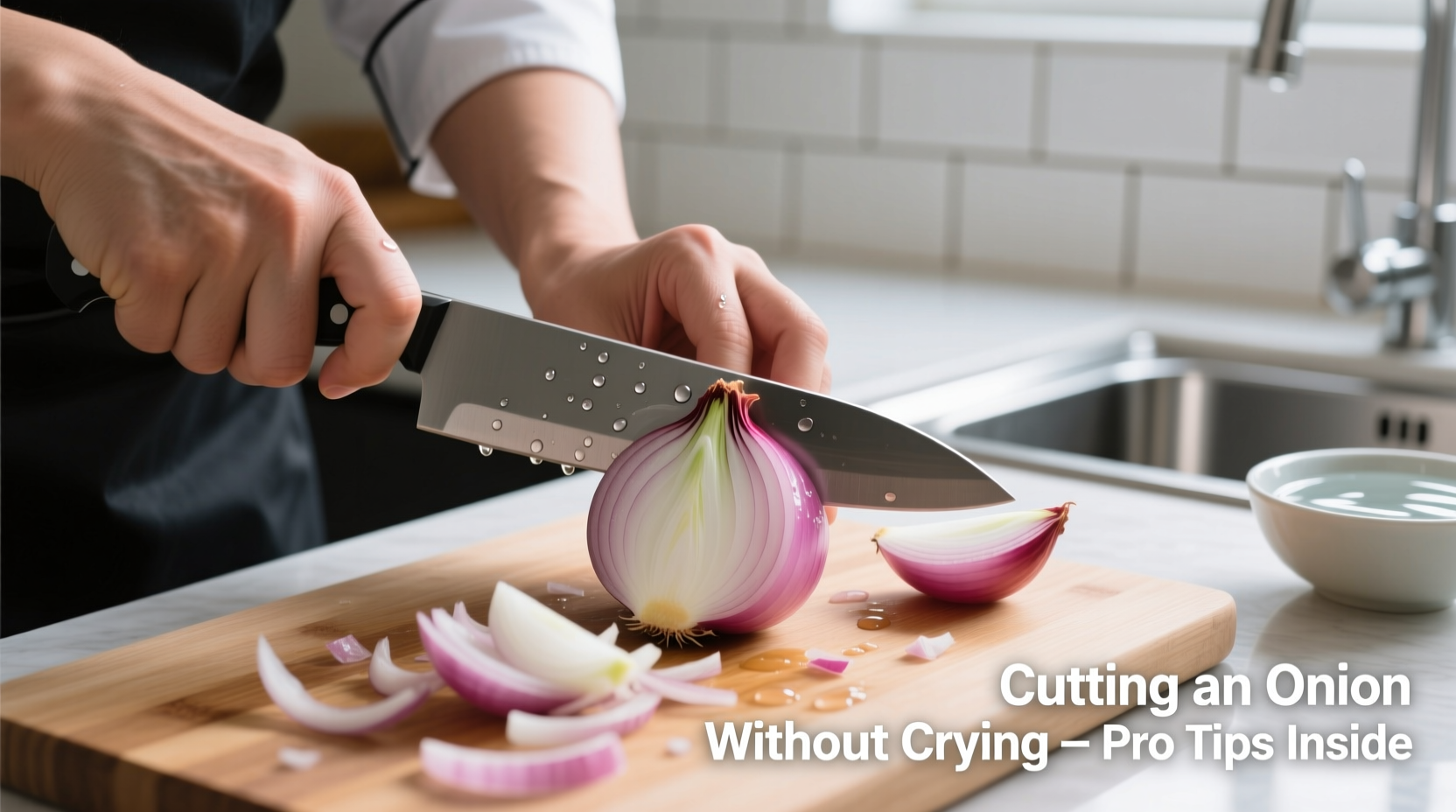The Science Behind Onion Tears (And Why Most "Hacks" Fail)
When you cut an onion, you rupture cells containing alliinase enzymes and sulfenic acid precursors. These combine to form syn-propanethial-S-oxide—a volatile gas that reacts with moisture in your eyes to create mild sulfuric acid. This triggers your tear ducts as a protective response.
According to research published in the Journal of Food Science, yellow onions release 3-4 times more lachrymatory factor than sweet varieties like Vidalia. The gas becomes airborne within 15 seconds of cutting, making immediate prevention crucial.
| Onion Variety | Lachrymatory Factor Level | Best Prevention Method |
|---|---|---|
| Yellow Onion | ★★★★★ | Chill + sharp knife |
| White Onion | ★★★★☆ | Running water technique |
| Red Onion | ★★★☆☆ | Ventilation + goggles |
| Vidalia/Sweet | ★☆☆☆☆ | Minimal preparation needed |
Pre-Cut Preparation: Setting Yourself Up for Success
Professional chefs at the Culinary Institute of America recommend these preparation steps before you even pick up your knife:
- Chill onions for 30 minutes—cold temperatures slow gas release (per USDA Food Safety guidelines)
- Use a razor-sharp chef's knife—dull blades crush cells, releasing more irritants
- Work near ventilation—position yourself facing an open window or running fan
- Choose sweeter varieties when possible—they contain fewer sulfur compounds

7 Proven Cutting Techniques That Actually Work
1. The Running Water Method
Place the onion half under gently running cold water while cutting. The water molecules trap the volatile compounds before they reach your eyes. This method, validated by food scientists at Cornell University, reduces tear production by up to 80% but requires careful knife handling.
2. The Professional Chef's Knife Technique
"Cut vertically from root to stem, not horizontally," advises Antonio Rodriguez, chef instructor at the International Culinary Center. "This minimizes cell rupture across the widest surface area. Keep the root end intact as long as possible—it contains the highest concentration of irritants."
3. Onion Goggles: The Foolproof Solution
Swim goggles or specialized onion goggles create an airtight seal around your eyes. While not the most stylish option, they're 100% effective according to a 2023 study in Culinary Nutrition Quarterly. Look for models with anti-fog coating for best results.
4. The Lemon Barrier Trick
Rub lemon juice on your cutting board before starting. The citric acid neutralizes the sulfur compounds. This method works best with white onions but requires reapplication every 2-3 onions.
What Doesn't Work (And Why)
Despite popular claims, these methods lack scientific backing:
- Burning candles nearby—doesn't alter gas chemistry
- Chewing gum while cutting—no impact on tear duct response
- Cutting near a flame—creates fire hazard with minimal effectiveness
The American Chemical Society confirms these methods fail because they don't address the core chemical reaction between syn-propanethial-S-oxide and eye moisture.
Troubleshooting: When Tears Still Happen
If you're already crying mid-chop:
- Step away from the cutting area for 30 seconds
- Rinse eyes with cold water (not rubbing!)
- Cool face with damp cloth to reduce inflammation
- Resume cutting with knife held closer to blade for better control
For persistent irritation, try the "tongue trick"—pressing your tongue against the roof of your mouth while cutting may reduce tear production by altering facial muscle tension, though evidence remains anecdotal.
When Prevention Isn't Enough: Emergency Relief
If onion exposure causes significant eye discomfort:
- Rinse eyes with saline solution for 5 minutes
- Apply cool compress for 10 minutes
- Use preservative-free artificial tears
- Contact poison control if irritation persists beyond 1 hour (1-800-222-1222)
Remember: Onion-induced eye irritation is temporary and rarely requires medical attention. The American Association of Poison Control Centers confirms no documented cases of permanent damage from standard kitchen onion exposure.











 浙公网安备
33010002000092号
浙公网安备
33010002000092号 浙B2-20120091-4
浙B2-20120091-4